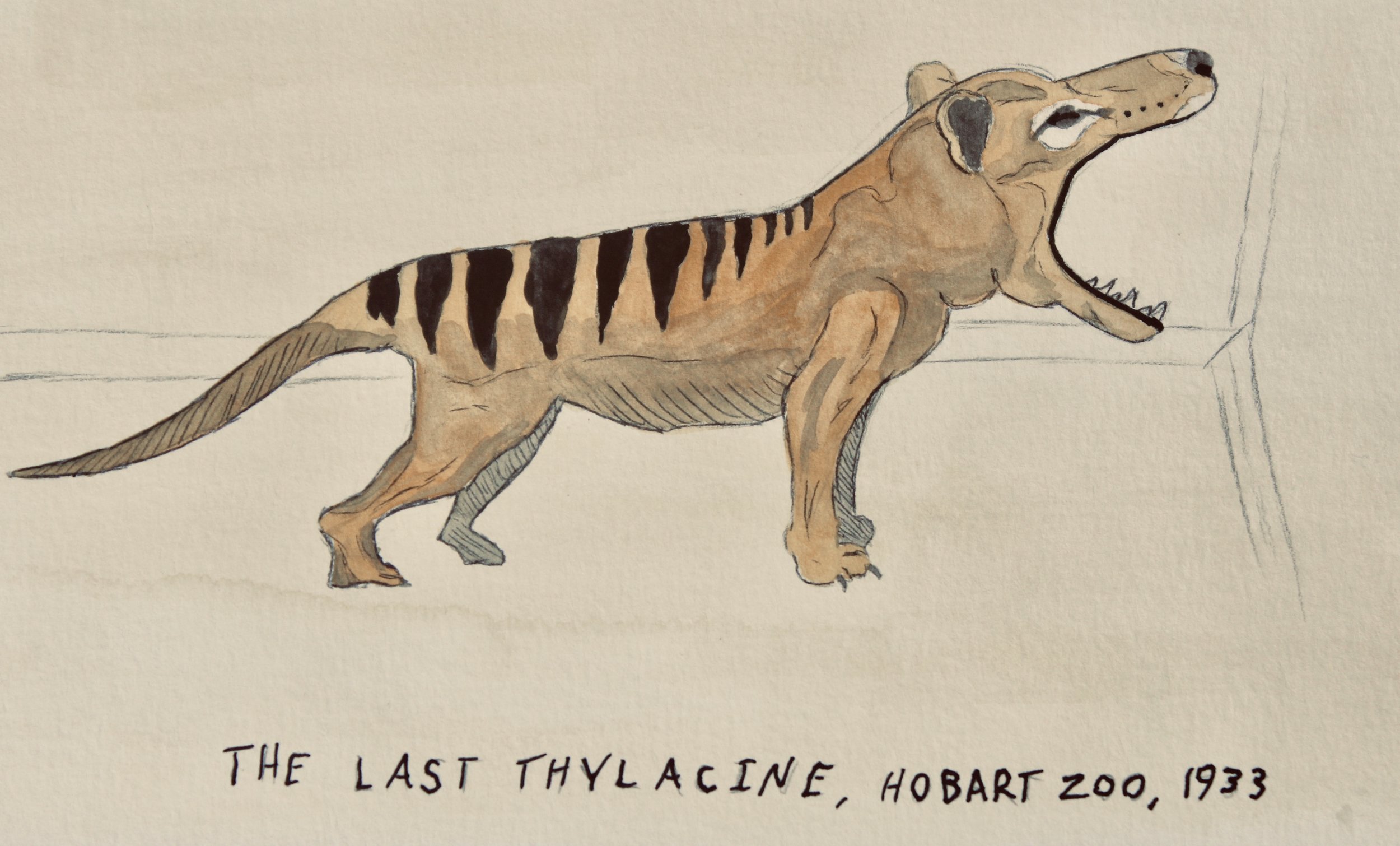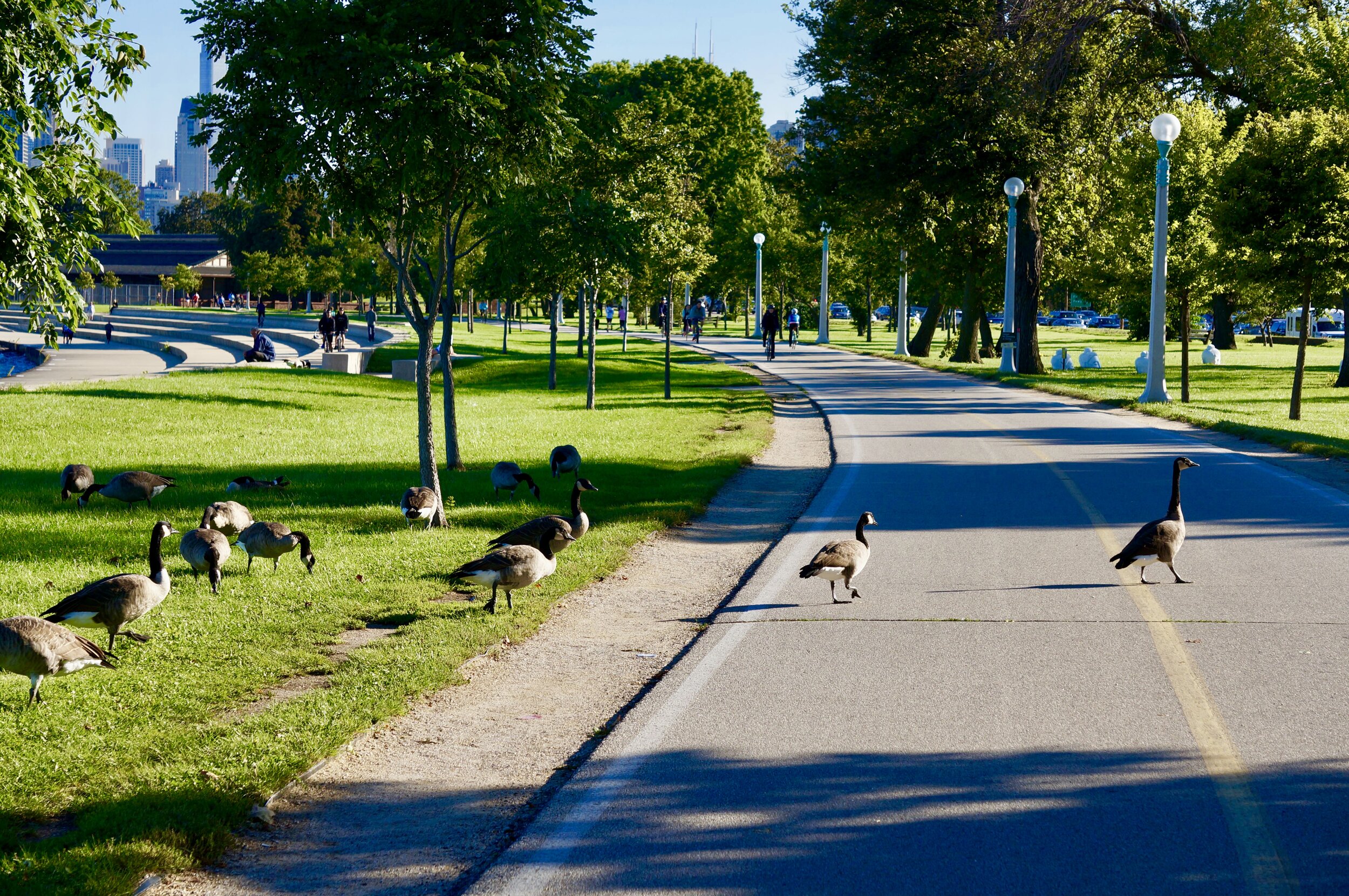Illinois was once home to the shaggy, elephant-like mastodon, whose monstrous size gave America and a founding father pride in the young country’s natural history.
Illinois’ state flag with a prehistoric twist.
THIS WEEK IS ILLINOIS FOSSIL WEEK ON NATURAL CURIOS. OVER THE NEXT FEW DAYS, YOU’LL MEET ONE OF THE STRANGEST CREATURES TO EVER EVOLVE, GIANT, SHAGGY ELEPHANT-LIKE ANIMALS THAT ONCE STOMPED ACROSS THE STATE AND INSPIRED THOMAS JEFFERSON, AND SOME OF THE LARGEST FOSSILS IN THE WORLD THAT CURRENTLY RESIDE AT CHICAGO’S FIELD MUSEUM.
Illinois’ contemporary wildlife is relatively paltry in comparison to its storied past. Bison, elk and mountain lions have been erased from the Land of Lincoln for a century. Black bears used to be plentiful throughout the state until 1870. Since 2008, there have only been three black bear sightings in Illinois. Today the largest animals you will see are white-tailed deer and coyotes.
But not too far in the past, giants lumbered through the ancient forests of modern-day Illinois. Around the size of an African elephant, the mastodon was a hulking browser with long, straight tusks and a flatter skull than its modern, distant relatives. The American mastodon (Mammut americanum) roamed Illinois and the rest of the Eastern United States from 3.75 million years ago to around 10,000 years ago, recent enough to inspire Native American legends of immense beasts bulldozing their way through the forest.
The Field Museum’s mastodon skeleton.
The creature’s colossal remains also captured the imagination of early European settlers to the United States. A massive mastodon tooth was discovered in New York in 1705. The tooth was eventually transported to London and rightfully labeled as a tooth from a “giant”. The fearsome creature that the gargantuan tooth belonged to became known as the incognito, or unknown animal, and was thought to be 70 feet tall by some sources. Although it may seem silly today, the creature’s incredible actual size (only 10 feet tall at the shoulder) became a sense of extreme national pride, especially to America’s third president.
For years Thomas Jefferson engaged in a bitter debate with the French naturalist, Georges-Louis Leclerc, over which continent had the bigger animals. Leclerc claimed that geographical factors in North America caused the North American animals to become “degenerate” compared to the elephants and lions of the old country. Jefferson was so incensed by the naturalist’s disparaging view of his country’s wildlife that he went so far as to transport large mountain lion skins and moose remains across the ocean to rub in the French naturalist’s face during his visits to Paris. But the creature that Jefferson had been waiting for, the one that would come to symbolize America’s natural exceptionalism in the country’s early years, was the mastodon.
The mastodon skeleton from the Field Museum’s Evolving Planet. Mastodon tusks are actually extremely modified upper incisor teeth.
In 1801, Jefferson helped painter-turned-naturalist, Charles Wilson Peale, exhume a massive skeleton from the Hudson River Valley in New York. The creature, whose skeleton remains were embellished with extra bones and fake materials by Peale, was eventually the star attraction at his museum in Philadelphia, the nation’s first natural history museum. This turned out to be only the second fossil reconstruction display in history, and it showed --- when first pieced together, the animal’s tusks were erroneously attached upside down.
Jefferson, who claims to have eventually convinced Leclerc to abandon his theory of degenerate species found in the new world, was not content with one mastodon. He would lay out the creature’s massive bones in a room in the White House, taking in its magnificent size. He even believed that the gargantuan creatures still roamed somewhere in the mysterious expanse of land to the west. When he sent Lewis and Clark out to explore the recently acquired land from the Louisiana Purchase in 1804, he desperately hoped they would discover the creatures still roaming in some pristine forest beyond where the map ended.
In Illinois, mastodons overlapped with their slightly larger cousins, the mammoth. When their huge bones became exposed (due to the process of erosion) starting in the 18th century, the two creatures were assumed to be the same until someone compared the teeth. Mammoth teeth are flat with small ridges, perfect for grinding grass and very similar to the teeth of their modern cousin, the elephant. The distantly-related mastodon had large cusps with sharp ridges, teeth so bizarre that some early scientists labeled them as carnivores. Their teeth proved to be perfect for stripping leaves from tree branches snagged with the mastodon’s trunk.
It’s all in the teeth: mastodon teeth (far left) look completely different than the distantly related Asian elephant (middle) and woolly mammoth (right). Despite the animals’ similar appearance, they had much different diets as illustrated by their different teeth.
Because the two giants had different diets and lived in different environments, they were able to coexist in some areas like Illinois. In Illinois there have been around 80 sites where mastodons have been found and close to 60 for mammoths. Many of these otherworldly remains are exposed at construction sites near Chicago as the city continues to expand. An almost complete mastodon jaw, studded with its tell-tale teeth, was uncovered in Bolingbrook during construction of the Interstate 55 highway. Two mammoth tusks were found in a creek in Logan County in 2005. Just this past April, a tusk, part of a jaw (complete with teeth) and massive leg bones from a mastodon were uncovered as workers tried to install a sewer line in Seymour, Indiana. The animal’s spectacular skeleton has graced some of the biggest stages in Illinois’ illustrious history, including Chicago’s Columbian World Fair in 1893, where it took its place of honor alongside the first Ferris wheel and specimens from every corner of the globe.
A nearly complete lower mastodon jaw discovered in Bolingbrook, Illinois at the Field Museum of Natural History.
Both of these titans from the Ice Age disappeared across the country at around the same time, between 11,000 and 10,000 years ago. There has not been one “smoking-gun” factor responsible for their extinction. The most likely explanation is that a variety of factors contributed to their demise, from a warming climate to the arrival of humans from Asia who brought spears and diseases with them. Whatever the cause, mastodons and mammoths, along with the American lion, giant ground sloth, and saber-tooth cats, stood no chance and faded into extinction, leaving only massive bones behind as proof of their time spent roaming the fertile lands of the Midwest.
In Illinois circa 2019, it takes quite a bit of imagination to picture the venerable creatures of the state’s past. Places like the Field Museum serve as a catalyst to help the young and old alike imagine a more primeval Illinois, one where a massive mastodon lumbered out of the dense thicket surrounding a swamp, grinding a trunk-full of leaves with its cusped teeth while great herds of mammoths trudge along the plains in the distance.
Me holding a cast of the enormous tooth from a mastodon!
Related Articles:
All photos and art by Jack Tamisiea.
Sources:
https://www.smithsonianmag.com/science-nature/mammoths-and-mastodons-all-american-monsters-8898672/
https://www.foxnews.com/story/mastodon-remains-turn-up-in-illinois
https://abc7chicago.com/science/mastodon-bones-unearthed-on-southern-indiana-farm/5263190/
https://www.huffpost.com/entry/9-illinois-critters-that_b_7787342





















